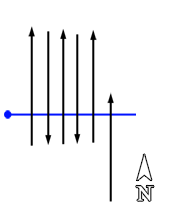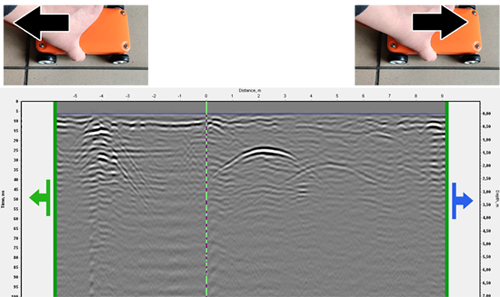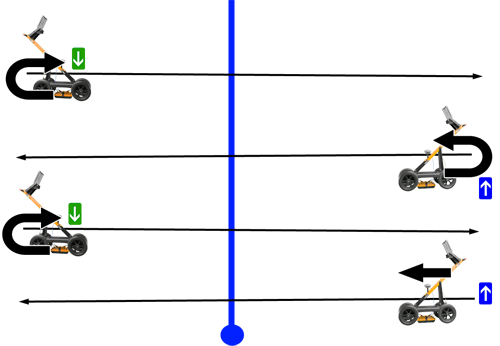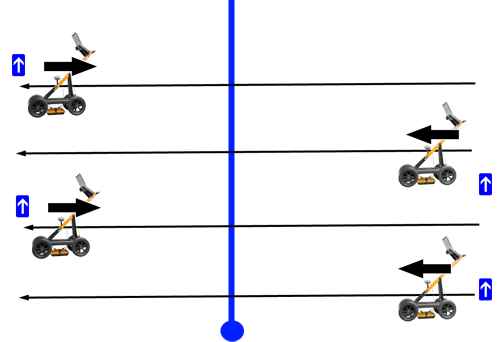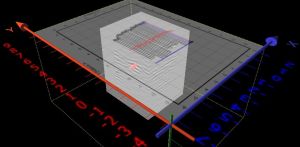Performing GPR sounding with the Synchro program, you came across, among others, such a setting of GPR profile as "Direction". This article will describe how to use this setting, what its value affects and what to do if errors occur.
So, the direction of the GPR profile makes sense only if several GPR profiles were made on the site and you need to understand how these profiles are mutually located, red profile on the picture.
If you are running disparate GPR profiles that are not related to each other, the direction of GPR profile is not used, blue profiles on the picture.
In the software package VIY, GPR profiles can be of three types: straight lines, arcs and freeform profiles.
Freeform profiles are recorded using GPS receiver and are positioned on the plan automatically and the direction parameter does not affect their position.
The position of straight and arched profiles is specified by the distance from the beginning of the baseline to the point of intersection with the profile and the distance along the profile to this point.
But here in the picture there are two profiles with the same parameters,
how do they differ - in direction. The following rule applies in the VIY software package: if, when crossing the baseline, the beginning of the baseline is on your left, the direction is forward.
And therefore, the correct parameters for these GPR profiles should be set like this:
If on the right - the direction is backward.
The same for arcs profiles
However, in life everything happens, and it happened that after finishing the profile, pressing the stop button, you saw that the position of the last profile on the plan was incorrect.
And it's good if you noticed this right on the site and have the opportunity to delete the last profile and write a new one instead. And what to do if the mistake is noticed already in the office at a distance of 300 km from the site? To do this, the Synchro program has a "Flip horisontally" button. When you press this button, the profile will be reflected relative to the zero point (the point of intersection with the base line), that is, it will turn over on the plan.
Voila, the bug has been fixed.
But there is one important remark. Our users have probably noticed that odometers allow you to move the VIY GPR in any direction, both forward and backward.
By the way, this allows, if you forgot to snap to the baseline, go back by clicking the checkbox button and continue recording the profile.
So, if you move the GPR rearward, then you should notice that the GPR profile in the program window increases to the left, and if you move it forward, the profile increases to the right.
Therefore, if you made a "forward" profile, then created a new profile and move the antenna rearward, then you do not need to change the direction parameter. That is, we use this rule:
if at the beginning of recording a next profile the GPR antenna was unfolded, then you need to switch the direction parameter,
but if you did not rotate the antenna, the direction parameter is the same as in the previous profile.







